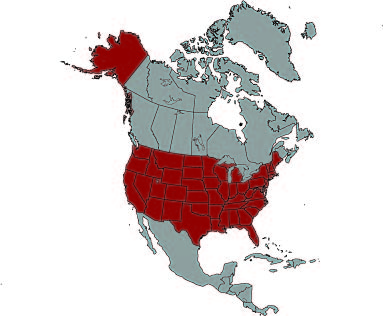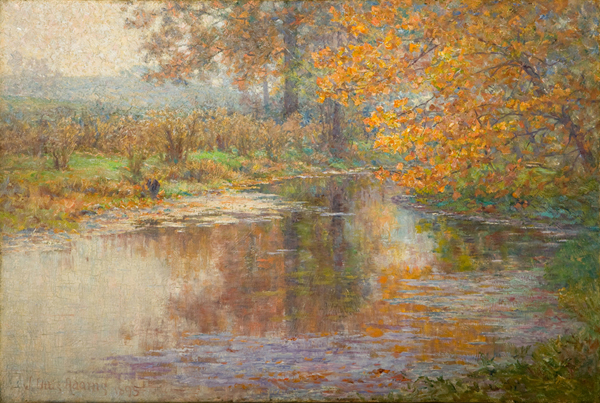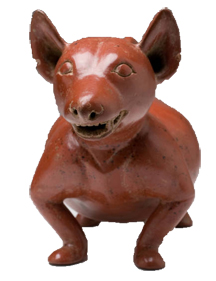

In France, a group of artists reacted to photography and other technological advancements in a way that revolutionized the painter's technique. Impressionists left their studios to paint scenes en plein air, or in the outdoors. If photography had successfully captured an image in time, then Impressionists sought to capture something else: light's effect on the figures and scenery around them.
By applying paint directly to the canvas in short, heavy brushstrokes of color, Impressionists expressed how light and movement changed the optical impression of a scene. The colors combined to form an image recognizable to the eye while individually expressing light's movement over the setting. Artists also often painted the same view more than once a day to capture the way light changed as the sun moved across the sky.
If you stand within three feet of Glimmer Glass you might not be able to decipher the subject of the painting. Step back. What do you see? The title itself hints at what the Impressionists sought to do. The word "glimmer" indicates the movement of light over the water, something that cannot be caught on still film. What other details in the painting imply movement?
John Ottis Adams, American
(1851-1927)
19 7/8 inches H; 29 15/16 inches W
Frank C. Ball Collection, gift of the Ball Brothers Foundation
1995.035.036
1841 The first collapsible tin tubes are patented for oil paint.
1874 Impressionists hold their first exhibition in Paris.
1880 Van Gogh begins his painting career.
1889 The Eiffel Tower built for the World's Fair.




